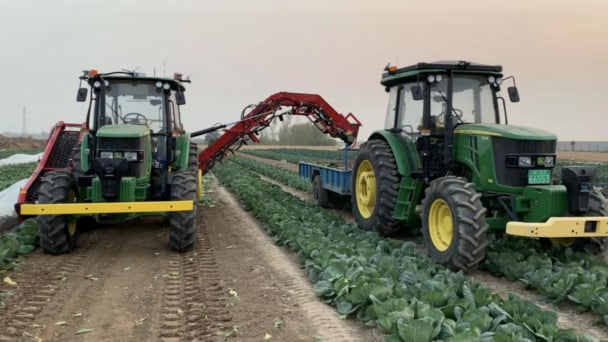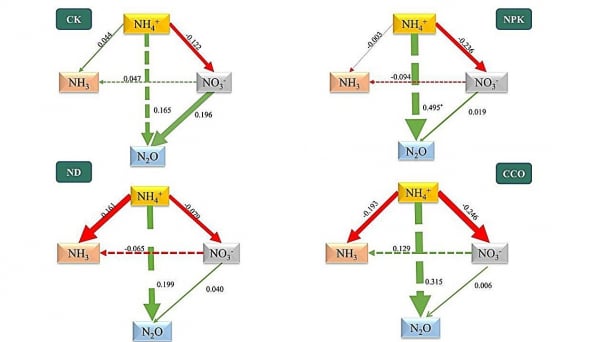June 26, 2025 | 11:29 GMT +7
June 26, 2025 | 11:29 GMT +7
Hotline: 0913.378.918
June 26, 2025 | 11:29 GMT +7
Hotline: 0913.378.918
This achievement is expected to pave the way for a substantial increase in volumes in the coming years, marking a significant shift in the global poultry trade dynamics, according to Russian officials.
Russia accounted for 10.5% of Chinese poultry imports last year, estimated to be close to 1.2 million tonnes, Agroexport, a Russian agency facilitating agricultural export reported, citing the data from the Chinese government.
China has emerged as a pivotal market for Russian poultry exporters in recent years. In 2023, a 56% of all deliveries to countries outside of the post-Soviet space were destined for China, according to the Russian Union of Poultry Farmers. This underscores the strategic importance of the Chinese market for the Russian poultry industry.
The rise of Russian poultry in the Chinese market was further fueled by a decline in the market share of US suppliers. Daria Podymova, head of the foreign trade department with the Russian Union of Poultry Farmers, noted that Russian companies managed to eat into the market share that once belonged to US suppliers. This shift was largely attributed to a 29.6% drop in US poultry sales to China in the wake of a series of highly pathogenic avian influenza outbreaks, as claimed by Podymova.
The looming economic difficulties have made China a challenging market for foreign suppliers.
“Significant factors in China include the sale by large transnational companies of their production facilities on its territory, including due to low consumer demand in 2023,” Podymova said, adding that the market also experiences a major transition towards ready-to-eat food, which shapes up the demand in all segments of the meat industry.
“The Chinese poultry industry is experiencing rather complex development dynamics with continued dependence on imports, which in turn opens up the opportunity for Russian exporters to increase supply volumes, including through the opening of new sales channels,” Podymova assumed.
China is mainly increasing imports of pork and poultry by-products, said Konstantin Korneev, executive director of Rincon Management, a Moscow-based think tank. For Russian firms, trade with China provides a unique opportunity to turn the poultry cuts considered waste into marketable products.
“These [the exported products] are mainly paws, wings, phalanges of bird wings, and the export of these parts to the [Chinese] republic will grow since there is a demand for them that is higher than the local supply,” Korneev said.
“But this is not about reorienting China towards supplies from Russia; the republic is increasing purchases from several countries,” Korneev pointed out.
However, Agroexport reported that during a recent round of negotiations between the Russian and Chinese trade delegations, several Chinese companies expressed interest in boosting imports from Russia. For example, the agency cited Beijing Xinshengbaili Trade, a prominent trader that promised to import 100-200 containers of meat products per year from Russia in the foreseeable future.
(PW)

(VAN) In the suburbs of Beijing, there is an agricultural center spanning over 150 hectares dedicated to research, demonstration, and application of high-tech and precision agriculture.

(VAN) Researchers from the Institute of Applied Ecology of the Chinese Academy of Sciences have developed a new environmentally friendly fertilizer additive that significantly enhances crop yields while reducing emissions of harmful gases.

(VAN) Poultry production in Poland, which has only started recovering from devastating bird flu outbreaks earlier this year, has been hit by a series of outbreaks of Newcastle disease, with the veterinary situation deteriorating rapidly.

(VAN) Extensive licensing requirements raise concerns about intellectual property theft.

(VAN) As of Friday, a salmonella outbreak linked to a California egg producer had sickened at least 79 people. Of the infected people, 21 hospitalizations were reported, U.S. health officials said.

(VAN) With the war ongoing, many Ukrainian farmers and rural farming families face limited access to their land due to mines and lack the financial resources to purchase needed agricultural inputs.

(VAN) Vikas Rambal has quietly built a $5 billion business empire in manufacturing, property and solar, and catapulted onto the Rich List.